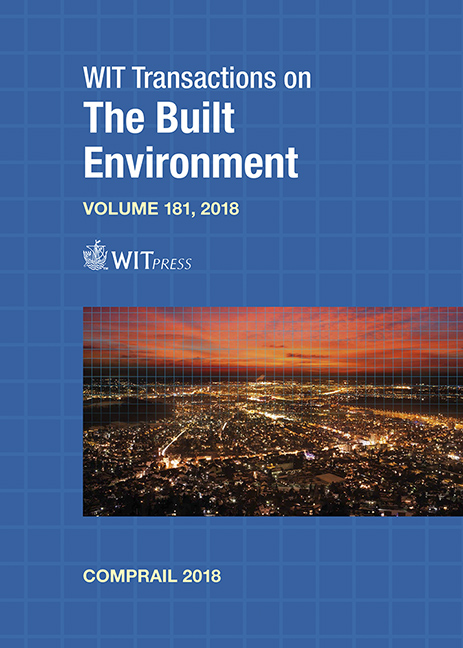CURRENT ESTIMATION METHOD AT THE TIME OF A CONTACT-WIRE BREAKAGE DURING STANDSTILL BELOW INSULATED OVERLAP BASED ON CONTACT-WIRE NECKING LENGTH
Price
Free (open access)
Transaction
Volume
181
Pages
11
Page Range
25 - 35
Published
2018
Size
601 kb
Paper DOI
10.2495/CR180031
Copyright
WIT Press
Author(s)
SHOGO WADA, KAZUHIKO ITO, TAKAMASA HAYASAKA
Abstract
One of the critical points in the DC feeding system is the insulated overlap. In the insulated overlap, the contact-wire breakage accident during standstill sometimes occurred. It is caused by joule heat due to the current flowing between the contact wire and the contact strip, through the arc due to poor contact condition. To understand the phenomenon of this kind of accident and to take countermeasures against it, it is important to evaluate the current that flows through breakage point. However, since the current is affected by the other train load current, it is difficult to estimate it based on the recorded data of the substation. Once the contact wire is softened, its mechanical strength decreases resulting in breakage due to tension force. The authors conducted wire break tests focusing on the arc. As a result, it has been found that the necking of the contact wire at the point of the breakage caused by the arc depends on the arc current and tension of the contact wire. In this study, the relationship between the arc current, the tension of the contact wire, and the necking length of the contact wire was investigated through the tests conducted under the condition where the arc current was set from about 30A to 300A under the tension of 9.8kN or 19.6kN. Then we proposed a method of estimating the current of the contact wire at the time of its breakage accident during standstill in the insulated overlap section based on the necking length of the contact wire.
Keywords
DC electric railways, insulated overlap, contact wire, breaking of wire, arc





